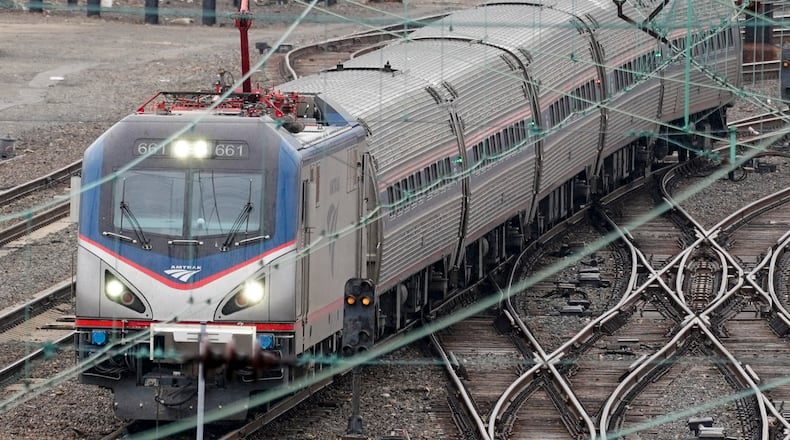“Adding Pittsburgh would open up Pittsburgh to Dayton and the East Coast,” said William Murdock, executive director of the Mid-Ohio Regional Planning Commission. “Adding Chicago would come right through Ohio’s smart mobility corridor.”
But Amtrak’s expansion plans require new federal funding, Congressional authorization, and state and local support and partnerships.
The Mid-Ohio Regional Planning Commission collected about 30 letters of support for new passenger rail service in Ohio from officials, elected leaders, and state and federal lawmakers that it shared with Amtrak.
Dayton City Commissioner Matt Joseph, Springfield City Manager Bryan Heck and leadership with the Miami Valley Regional Planning Commission and Clark County-Springfield Transportation Coordinating Committee sent letters in support of a new 3-C+D rail route, connecting Dayton, Cleveland, Columbus and Cincinnati.
But local leaders and officials in their letters also said they support a new passenger rail corridor linking Chicago, Columbus and Pittsburgh.
Central Ohio has no passenger rail service, a key missing ingredient in its comprehensive transportation network, wrote Brian Martin, executive director of the Miami Valley Regional Planning Commission.
Dayton lost passenger train service in 1979. Columbus is the second largest city in the nation without Amtrak service and the state’s capital is the largest U.S. city without any fixed-rail passenger service.
Amtrak’s expansion proposal would strengthen access to other Ohio metro areas, and Dayton could become an important connector to Great Lakes regional networks,Joseph said in his support letter.
New passenger rail service could make Dayton more attractive to businesses, allowing workers to commute to or visit other metro areas, and younger generations prefer rail over other types of transportation, he said.
“The connection to Pittsburgh would open an important direct route between Dayton and regions further east,” Joseph wrote. “Please consider adding this important Midwestern connection to the Amtrak System 2035 Plan.”
During a recent roundtable with Amtrak, Dayton Mayor Nan Whaley said the proposed routes would connect the region and state to the rest of the nation.
“We need to be part of what we know the entire country is doing, which is using rail transport not only to move goods, but people,” Whaley said.
Scott Schmid, transportation director for the Clark County-Springfield Transportation Coordinating Committee (TCC), told the Dayton Daily News that the new routes would make Columbus similar to an airport hub, serving as a transfer point to routes leading to other destinations.
In his letter, Schmid also referenced the findings of a study from the Mid-Ohio Regional Planning Commission.
The study estimates that within the next two decades more than 1 million new jobs and 3 million new residents will live along the proposed Chicago-Columbus-Pittsburgh corridor.
“Anything that provides Springfield residents with additional non-vehicular options to access other metro areas is a plus,” he said. “The same holds for the reverse in allowing residents from other metro areas to access Springfield for work or leisure.”
Schmid said he could see families and residents use passenger rail for weekend getaway trips and Ohioans during the week would ride the train for work.
The Mid-Ohio Regional Planning Commission and the Northeast Indiana Passenger Rail Association have worked with local public and private partners for years to study the corridor.
The Chicago-Columbus-Pittsburgh corridor would complement and strengthen the 3-C+D route, said Murdock, the regional planning commission’s executive director.
Some communities and regions across the country want larger corridor expansions than what Amtrak has proposed, said Marc Magliari, a company spokesperson.
But he said the bigger the passenger rail network, the better it is for all the routes, and Amtrak is very open to this proposal.
“We don’t pretend to have all the answers and know everything,” he said. “One (proposal) doesn’t hurt each other ― in fact they help each other.”
“The more the merrier,” he added.
About the Author




